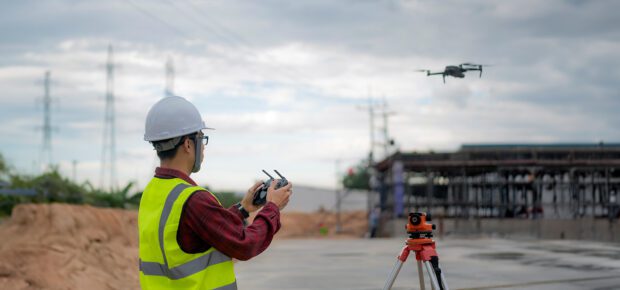January 25, 2024
Across the globe, the construction industry is hitting a critical point. As seasoned workers in countries with post-World War II baby booms start retiring, there’s a noticeable gap left in their wake. The issue? Younger generations aren’t stepping in at the same rate.
This isn’t just a local problem; from the U.S. to Europe, and stretching to the Middle East and Asia, the demand for construction workers is outpacing supply. The Association of Builders and Contractors in the U.S. flagged the need for over half a million additional workers in 2023 alone, while Europe’s shortfall is hitting the millions.
This isn’t your typical construction scene anymore. Workers today are not just battling the elements outdoors; they’re at the forefront of a technological revolution in the industry. Think AI-driven insights, robotics in bricklaying and augmented reality for on-site planning. These advancements aren’t just changing how we build – they’re reshaping the skills needed on the ground.
Workers in construction are often exposed to the weather, said IEEE Member Gabriel Gomes de Oliveira. The work is hard, and the environment is often very different from that in industrial settings, where workers may sit in air-conditioned areas.
“With the application of technology, we’ll improve the service in terms of time, quality and cost,” Oliveira said.
The construction industry is looking to technology to fill the gap, and that will require workers with a whole new set of skills.
“Key for future work in this area will be understanding data gathering and analysis technologies and the best way to use these tools,” said 2024 IEEE President Tom Coughlin. “This includes knowledge on how to work with AI.”
How Technology is Changing Infrastructure Jobs
To understand how jobs in infrastructure are evolving, consider how technology may be used in the future. An article in the IEEE Journal of Industrial Informatics captures the scope of new developments.
Researchers have used artificial intelligence models to mine past knowledge on how different concrete recipes affect the quality of concrete and thus, the quality of buildings. The system shows that models could be used to train less experienced builders in the absence of highly skilled workers.
Robots might be used for a number of tasks, from physically laying bricks and concrete blocks, to carrying heavy loads.
Companies have already begun to use modular construction techniques, where portions of a project are constructed off site, allowing the construction industry to take advantage of advanced manufacturing techniques.
Augmented and virtual reality systems may be used to present digital plans superimposed on the real world, giving electricians, for example, wiring instructions they can visualize.
And finally, drones and autonomous vehicles are already being used to inspect infrastructure and construction sites.
Skills for a New Era
IEEE Fellow William Webb foresees growth in jobs dealing with drones for inspection of infrastructure and the management of sensor networks to collect data. Analysts will be in demand to make sense of a deluge of data. And infrastructure operators will need cybersecurity specialists to keep the system secure.
“The workforce will need the skills to be able to assess and make recommendations on infrastructure maintenance and updates based on data collected and analyzed by new technology systems,” Webb said. “Skills will also be needed to control and maintain the systems (drones, IoT and AI programs) used to monitor, collect and analyze data.”
Oliveira however, envisions a future in which people adopt digital skills through short, intensive training courses.
“Young people these days are born to use smartphones,” Oliviera said. “They already know how to use technology. The trend will be short-term, professional courses so a person knows specific areas such as 3D printing, sensors and systems or building information modeling (BIM) software.”
Learn More: Want to get an early start on preparing for a new generation of infrastructure jobs? Check out TryEngineering, powered by IEEE. TryEngineering aims to inspire the next generation of STEM professionals by empowering educators with lesson plans and projects.






 Liquid Infrastructure: Our Planet's Most Precious Resource
Liquid Infrastructure: Our Planet's Most Precious Resource The Impact of Technology in 2025
The Impact of Technology in 2025 Quantum and AI: Safeguards or Threats to Cybersecurity?
Quantum and AI: Safeguards or Threats to Cybersecurity? Why AI Can't Live Without Us
Why AI Can't Live Without Us Bits, Bytes, Buildings and Bridges: Digital-Driven Infrastructure
Bits, Bytes, Buildings and Bridges: Digital-Driven Infrastructure Impact of Technology in 2024
Impact of Technology in 2024 Emerging AI Cybersecurity Challenges and Solutions
Emerging AI Cybersecurity Challenges and Solutions The Skies are Unlimited
The Skies are Unlimited Smart Cities 2030: How Tech is Reshaping Urbanscapes
Smart Cities 2030: How Tech is Reshaping Urbanscapes Impact of Technology 2023
Impact of Technology 2023 Cybersecurity for Life-Changing Innovations
Cybersecurity for Life-Changing Innovations Smarter Wearables Healthier Life
Smarter Wearables Healthier Life Infrastructure In Motion
Infrastructure In Motion The Impact of Tech in 2022 and Beyond
The Impact of Tech in 2022 and Beyond Cybersecurity, Technology and Protecting Our World
Cybersecurity, Technology and Protecting Our World How Technology Helps us Understand Our Health and Wellness
How Technology Helps us Understand Our Health and Wellness The Resilience of Humanity
The Resilience of Humanity Harnessing and Sustaining our Natural Resources
Harnessing and Sustaining our Natural Resources Creating Healthy Spaces Through Technology
Creating Healthy Spaces Through Technology Exceptional Infrastructure Challenges, Technology and Humanity
Exceptional Infrastructure Challenges, Technology and Humanity The Global Impact of IEEE's 802 Standards
The Global Impact of IEEE's 802 Standards Scenes of our Cyber Lives: The Security Threats and Technology Solutions Protecting Us
Scenes of our Cyber Lives: The Security Threats and Technology Solutions Protecting Us How Millennial Parents are Embracing Health and Wellness Technologies for Their Generation Alpha Kids
How Millennial Parents are Embracing Health and Wellness Technologies for Their Generation Alpha Kids Space Exploration, Technology and Our Lives
Space Exploration, Technology and Our Lives Global Innovation and the Environment
Global Innovation and the Environment How Technology, Privacy and Security are Changing Each Other (And Us)
How Technology, Privacy and Security are Changing Each Other (And Us) Find us in booth 31506, LVCC South Hall 3 and experience the Technology Moon Walk
Find us in booth 31506, LVCC South Hall 3 and experience the Technology Moon Walk Virtual and Mixed Reality
Virtual and Mixed Reality How Robots are Improving our Health
How Robots are Improving our Health IEEE Experts and the Robots They are Teaching
IEEE Experts and the Robots They are Teaching See how millennial parents around the world see AI impacting the lives of their tech-infused offspring
See how millennial parents around the world see AI impacting the lives of their tech-infused offspring Take the journey from farm to table and learn how IoT will help us reach the rising demand for food production
Take the journey from farm to table and learn how IoT will help us reach the rising demand for food production Watch technical experts discuss the latest cyber threats
Watch technical experts discuss the latest cyber threats Explore how researchers, teachers, explorers, healthcare and medical professionals use immersive technologies
Explore how researchers, teachers, explorers, healthcare and medical professionals use immersive technologies Follow the timeline to see how Generation AI will be impacted by technology
Follow the timeline to see how Generation AI will be impacted by technology Learn how your IoT data can be used by experiencing a day in a connected life
Learn how your IoT data can be used by experiencing a day in a connected life Listen to technical experts discuss the biggest security threats today
Listen to technical experts discuss the biggest security threats today See how tech has influenced and evolved with the Games
See how tech has influenced and evolved with the Games Enter our virtual home to explore the IoT (Internet of Things) technologies
Enter our virtual home to explore the IoT (Internet of Things) technologies Explore an interactive map showcasing exciting innovations in robotics
Explore an interactive map showcasing exciting innovations in robotics Interactively explore A.I. in recent Hollywood movies
Interactively explore A.I. in recent Hollywood movies Get immersed in technologies that will improve patients' lives
Get immersed in technologies that will improve patients' lives